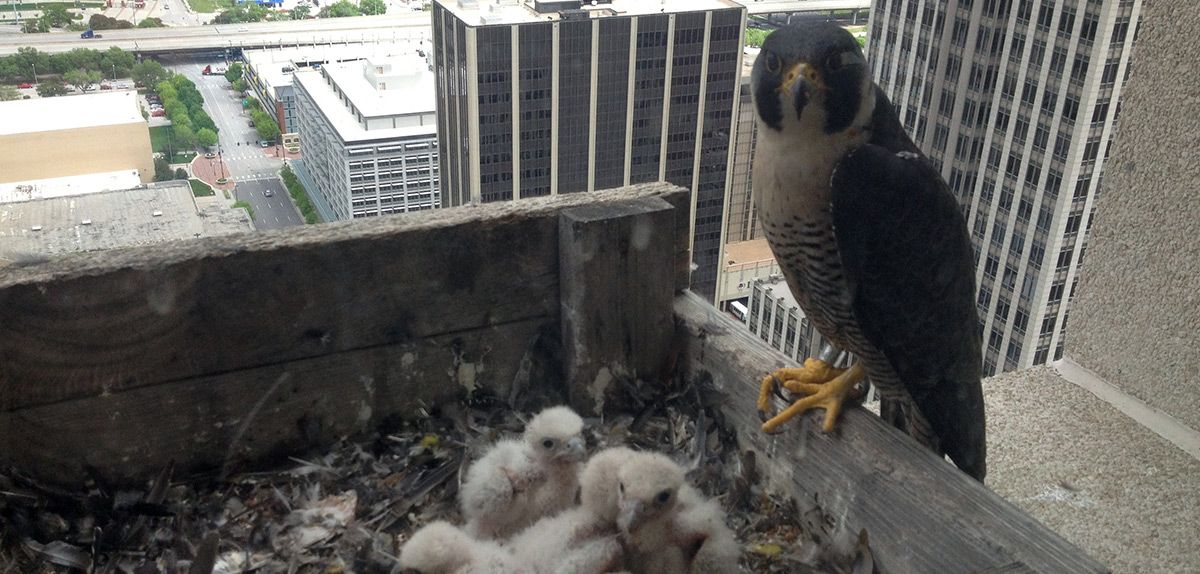
Falcon Facts
Peregrine Falcon History
Read about their near extinction and epic comeback.
Thirty thousand years ago, many peregrines began roaming the skies of the present-day United States east of the Mississippi River and in the Rocky Mountains. In the 1930s, there were approximately 1,000 nesting pairs of peregrines, 300‐400 of which nested east of the Mississippi River. But in the early 1950s, the breeding population began to disappear.
Endangerment by DDT
In 1970, the peregrine falcon was listed as an endangered species. By 1975, the peregrine population east of the Mississippi had vanished, and only 20% of the breeding pairs remained.
Widespread use of the pesticide DDT, which was used to protect trees and crops from insects, nearly annihilated the bird in the United States. Smaller birds, on which the peregrines fed, were being contaminated by eating insects sprayed with DDT. The pesticide weakened the birds’ reproductive capability by making them produce thin-shelled eggs that broke when incubated by the adults.
Surviving and Thriving
It is estimated that more than 7,000 pairs of Peregrines breed in North America, including Mexico. On Aug. 25, 1999, the U.S. Fish and Wildlife Service officially removed the American peregrine falcon from the Federal List of Endangered and Threatened Wildlife.
Peregrines in Nebraska
In 1988, the Nebraska Peregrine Falcon Project reintroduced the bird in Nebraska with the release of seven falcons atop the WoodmenLife Tower in Omaha, NE. Currently, the State Capitol in Lincoln, NE is home to a nest; and more nests have been sighted in taller buildings and towers around Omaha.
Web 514 R-3/21
